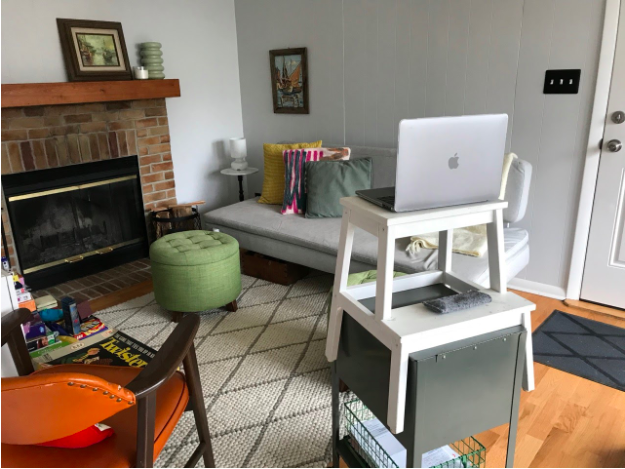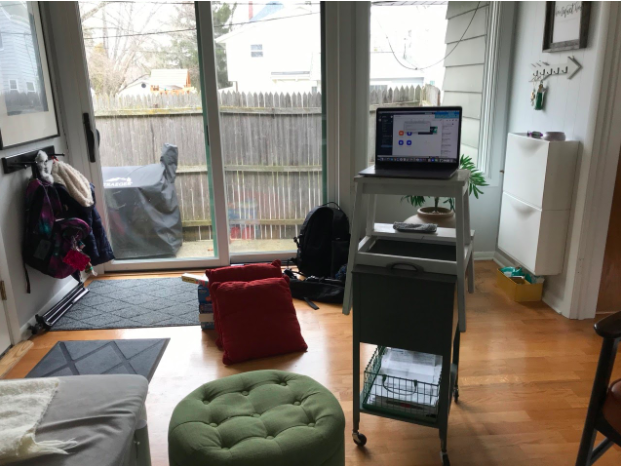 If the coronavirus pandemic has taught us anything in communications, it’s that the power of video is real. Can you imagine going through this without video?
If the coronavirus pandemic has taught us anything in communications, it’s that the power of video is real. Can you imagine going through this without video?
We’re getting videos on everything from the proper way to wash hands to parents venting over crazy kids. My favorite video of the latter doesn’t even come from this country!
Our world feels a little smaller and we can feel a little closer because of video.
Getting the Message?
That means if you work in communications for a business, brand, or organization, you need to step up your game.
Communications professionals: if you weren’t doing video before all of this, you better start, and the sooner the better (spoiler alert: like right now).
Don’t get me wrong, I know it’s a little tricky.
How do you produce a video in the middle of a pandemic?
As a video producer, I have to admit, it’s a challenge.
The video production process might look a little different, but it can be done… and done well.
DIY Video Production
Certainly, DIY video production is leading the charge. Whether you’re jumping on a video meeting or using a smartphone to record a message, we all have the tools to produce our own videos.
Normally, I have set criteria for companies considering whether or not DIY video is acceptable for them.
- If you have zero marketing budget or you’re a start-up
- If you are a kitschy company and your customers/clients know this about you
- If you’re producing short videos for social media or doing live video
Today though, all bets are off!
I don’t care if you’re working at a Fortune 500 company or you’re a solopreneur, DIY video production is not only fine to produce, it’s a necessity.
Normally, my big concern for businesses and organizations is reputation. An amateur video makes you look, well, like an amateur.
That’s not a huge concern right now. Because everyone is using their smartphones and laptops to shoot video. We as viewers have become accustomed to seeing it.
If we see it from a trusted brand as well, it just fits right in with everything else.
Now, that doesn’t mean you have to throw caution to the wind when it comes to your DIY video production.
My Top DIY Tips
Whether you’re shooting a short video or going into a Zoom meeting, here are some suggestions for shooting better DIY video.
- Camera Position: make sure your camera lens is eye-height or slightly higher. If that means propping up your laptop… do it! It’s a far more flattering angle than looking up at you. If you can see the crease where your ceiling meets the wall, your angle is too low.
- Lighting: do your best to make sure your main light source is positioned in back of the camera and not in front of it. For example, if you’re setting up for a video chat, make sure you’re facing the window and it’s not behind you. No natural light? Put a lamp right behind your webcam so it’s lighting your face.
- Sound: if you have a microphone, use it. If not, make sure you’re as close to your computer or smartphone as possible.
- FYI… these photos are from the Zoom setup I’m using in my home during the pandemic.



A little education goes a long way, so if you’d like more… you’re welcome to our DIY Video Guide to help.
Professional Videos
Having said that, there’s still a way to create a professional video. There’s also a good reason to do so.
With all the DIY videos being produced right now, a professional video is going to make you stand out even more than usual.
Again, the video production process might be different, the completed video might look different as well, but it can be done, even remotely.
Case Study
It’s not an ideal situation, but video producers can still put together some amazing videos within these constraints.
Use the example below to inspire your own DIY video production or think through how you can best use a professional.
Our challenge was to create videos with no in-person access to the people we would like to interview and b-roll (raw video) we would like to shoot.
I’m not going to lie, that’s pretty daunting.
However, as a half-full kind of guy, I have always been up for a challenge.
Like everyone else, we have turned to video chat services such as Zoom. It provides us the opportunity to conduct interviews with people pretty much anywhere around the country.
The quality is not what we’re accustomed to shooting video with our equipment, but that’s when you have to put your creativity hats on. We found lower quality, in this case, can actually lead to something great.
Hold that thought.
We Had a Plan
We brainstormed all sorts of ideas going into the first video we produced during this pandemic. And they can certainly apply to just about any business or organization to create great professional videos or fuel your DIY video production.
The truth is the only thing impacting professional video production is whether or not you’re able to shoot new video at this time.
I know, I know… that’s pretty huge.
However, it isn’t insurmountable. Here are some things that can be done to replace a traditional video shoot.
- Use online video conferencing to record interviews
- Gather any existing company video assets, either raw file video or even past completed videos
- Collect any professional photographs taken for the company, especially editorial-style photos of people working
- Supplement those raw materials with royalty-free video and/or photos
Post-Production is Business as Usual
As video producers, once you have helped us gather the raw materials, then it’s business as usual for us.
We:
- Transcribe all of the sound bites from the interviews
- Create scripts that tell compelling stories
- Edit the videos according to the scripts
Boom!
That’s a simplified way of looking at it, but post-production is half of what we normally do, and quite frankly, we can do it from our kitchen tables if need be.
The finished video might look a little different, mainly because of the video chat-style interview, but viewers won’t bat an eyelash. Again, we’re accustomed to seeing that type of “talking head” right now.
Changing Mindsets
Having said all of that, we had an epiphany while producing our first video during the pandemic.
Our whole mentality shifted after our first interview, which was for an internal video at a major healthcare provider addressing the coronavirus outbreak.
What changed is how the raw-looking Zoom video seemed to pair with the raw emotions from the person we spoke with.
We realized we needed to match our “b-roll” to what we were getting during the interview. Not just match the content of what was being discussed, but the whole “feel” of it as well.
This mindset-shift is one you can carry with you through all of your content right now. We are in a different time, allow yourself to see and deliver things that fit. Even if they are not your norm.
Never Hurts to Ask
We decided to ask a little more of our interview subject. We asked if she would take some photos for us. Photos of where she works, the co-workers she was referencing, and to have someone take some photos of her as well.
For most projects, we would never ask an amateur photographer to provide us with all of our visuals, but it made sense in this case.
Happy Accident
The goal for the internal video was to provide an uplifting story to inspire the company’s healthcare workers during this difficult time. That raw-looking interview paired with photos provided by the workers themselves all fit.
It made it feel real and authentic.
And while the imagery might have been less than polished, the storytelling and editing were professional all the way.
Making Lemonade
You can do this, too.
You can unleash the passion behind your business in the face of adversity.
We’re all facing rough times: businesses, non-profits, the public sector. All of us.
Your videos can and should reflect your feelings…all of your feelings!
That’s where video shines.
Video isn’t about facts and figures. Video is about emotion and storytelling.
Would that healthcare video have been better if we had been able to shoot the story in-person?
Probably.
While I love the authentic look we ended up creating, we likely would have gotten even more emotion out of our interview subject if we had been there in-person.
But that’s okay.
We found a way to make it work, and it made for a wonderful video.
That’s the name of the game in this current environment. Do what you can with what you can. Use it as a reason to tap into your creative muscle.
Make It Work for You
There’s a time and a place for everything. Whether it’s letting a pro produce your video or going the DIY video production route. Or in this example, using a pro to make the best of DIY material.
Don’t let circumstances keep you from communicating with your audience. Even with video.